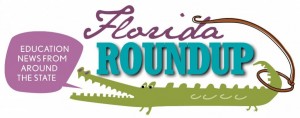 Peter Zucker, the creator of the popular South Bronx School blog, has quite the disciplinary record.
Peter Zucker, the creator of the popular South Bronx School blog, has quite the disciplinary record.
At a 2015 arbitration hearing, Zucker was convicted of “neglect of duty; conduct unbecoming his position or conduct prejudicial to the good order, efficiency, or discipline of the service; insubordination; [and] substantial cause rendering him unfit to perform properly his obligations to the service.”
He was suspended without pay for four months.
Most people would find it reasonable to expect that no matter how remorseful Zucker may have felt, his disciplinary mishaps warranted permanent removal from the classroom. Yet, six years later, he is still employed by New York City’s Department of Education.
That’s because the United Federation of Teachers protected him.
UFT’s crusades on behalf of bad teachers have not been limited to Zucker. From 2005 to this past June, UFT pressure ensured the presence of “Rubber Rooms,” which housed more than 700 teachers with disciplinary concerns each year. Residents booked trips, played chess, and practiced ballet while being paid as if they were teaching classrooms full of children.
While New York City contains perhaps the most egregious examples, teacher unions around the country protect and defend bad teachers. A 2016 NPR/Ipsos survey found that more than 60% of teachers, accounting for union membership, agreed that union pressure made it more difficult to fire bad teachers.
Right-to-work laws and collective bargaining bans can help mitigate the power imbalance, but they still leave bad teachers answerable only to the bureaucracy that has long defended them. Only school choice holds teachers accountable to the people that matter most — families.
The proposition makes sense logically. Private and charter schools generally have smaller class-sizes and greater student-teacher interaction. If parents are not satisfied with their child’s instruction, they can ask for a different teacher, or simply take their business elsewhere. If one teacher causes so many problems that they affect the durability of the school, the school can simply fire them and move on.
But the proposition is also backed by data. Whereas it can take more than six years to fire a public school teacher, private and charter school teachers can often be fired extremely quickly. Private schools consistently have higher turnover rates than public schools.
Different salaries and certification requirements drive some of the turnover differential, but the added accountability matters, too.
Furthermore, children and parents aren’t the only ones who benefit from the removal of bad teachers; good teachers are left in a much better position. The tension and animosity between public school teachers and administrators can, at least to a certain extent, be attributed to union pressure.
But in a union-free environment where educational choice is a reality, administrators and good teachers can cultivate a trusting relationship. It leaves room for teachers to pick an employer with whom they share their values and offers opportunities to innovate new learning strategies and energize students.
The only people who believe in the constraining power of corrupt institutions are the ones in charge of those institutions. Families and administrators don’t want bad teachers instructing the next generation, and good teachers don’t want to be held back by those who don’t take their job seriously.
Those who truly want the best for American children (and teachers) should support school choice. It is the only policy change that can truly create happy and healthy classrooms that satisfy all stakeholders.
Otherwise, children will continue to be trapped in classrooms with instructors who don’t belong there, and parents will have little recourse. That simply isn’t fair to anyone.
Editor's note: This is the second of four guest posts on the future of teachers unions.
by Joe Williams
When I was a cub reporter in my 20’s at a unionized (but open shop) newspaper in the Midwest, I waited about five years before I signed my union card and started paying dues to the Communications Workers of America. The delay wasn’t because I was cheap (though I was). It was out of principle: I had trouble supporting a union and a collective bargaining agreement which was at complete cross-purposes with my interests. I actually liked my job and wanted to keep it.
I was the youngest, least-senior reporter at a time in the early 1990’s when newspapers nationwide were just starting their cost-slashing death spirals, which meant I was watching colleagues take buyout after buyout, while position after position would subsequently go unfilled. The contract held that if there were layoffs, it was “Last In, First Out.” And rumors of layoffs were almost always in the air.
I understood the union had a job to do by representing the older folks who were worried that a cheaper (and perhaps more handsome) young worker might inch them out of a higher-paying job. But it just seemed stupid for me to pay dues to a union that was fighting hard to make sure I was going to be the chump who was teed-up to get tossed out onto the street. (After a few years, some new chumps came on board and I gave in to the argument that I had been a free-loader on the union contract for a long time.)
I mention this at the start of this post on the future of teacher unionism not because I want to hammer away at LIFO or the newspaper industry, but because I believe it is important to remember that self-interest is a pretty important factor in this discussion. Two considerations, in particular, are worth noting:
1. Teachers will continue to seek protection from teacher unions if they believe it is in their interest.
2. Unions will continue to operate using business models which are in the union’s interest. (more…)
Editor's note: This is the first of four guest posts on the future of teachers unions.
At the heart of any discussion of the unions’ role in American education, whether that role is now or in the future, lies a fundamental dilemma. On the one hand, it is clear that teachers are the key determinants of student achievement, that they are the experts on teaching, and that, if human capital is to be organized in the best possible ways for educating children, teachers need to have systematic input when decisions are made. They also need to be involved in the implementation process as decisions get translated into action. The teacher unions - which represent teachers and provide the key means of coordinating their behavior toward agreed-upon ends - would therefore seem to have very positive roles to play in both the making and implementation of education policy.
There is, however, an on the other hand. And herein lies the dilemma. Teachers join unions to protect and promote their occupational interests as employees: in job security, in better wages and benefits, in restrictive work rules. These job interests - which are the core interests that motivate union behavior - are simply not the same as the interests of children or the requirements of effective organization. Throughout the modern era, as a result, the teacher unions have often used their political power to block or weaken major reform efforts - efforts that would expand school choice, evaluate teachers based on performance, pay teachers with some reference to performance, move bad teachers out of the classroom, and more - because these reforms are threatening to the jobs of their members. Similarly, the unions have used their power in collective bargaining to impose work rules - seniority based layoffs and transfers, restrictions on teachers assignments, onerous evaluation and dismissal procedures, and the like - that are not designed to promote effective organization, and indeed are perverse and counterproductive.
So the dilemma, to state it simply, is that teachers are enormously important to the effective organization of schooling, and their involvement in decision making and reform makes eminently good sense - yet when teachers are organized into unions, the teacher unions use their power to promote the job interests of their members rather than the best interests of children, and this often leads them to undermine effective organization and stand in the way of reform.
That there is a dilemma here is not a secret. Indeed, over the last decade or so, this problem has increasingly become a topic of concern within the reform community, particularly among the growing numbers of liberals, moderates, and Democrats who - while supportive of teacher unions and collective bargaining in general - are now critical of the teachers unions for being obstacles to reform and effective schools.
The widespread view among this crucial group of reformers, however, is that there is a solution to the problem. The solution is reform unionism: which rests on the belief that, with enlightened union leadership (think Randi Weingarten) and sufficient pressure from the outside (think Race to the Top’s “union buy-in” requirement), the unions can be expected to change their behavior - to stop blocking reform, to stop imposing restrictive work rules, and to actively embrace whatever approaches to schooling are best for kids. In a world of reform unionism, then, union power is not a problem and indeed can be welcomed and embraced - because the unions will use their power in the best interests of children and quality education.
This belief is a way of squaring the circle for those who see unions and collective bargaining as essentials of the good society. But in the hard light of reality it is fanciful and misguided, and it prompts reformers to look for solutions where they don't exist. (more…)
Parent trigger. Joe Henderson from the Tampa Tribune on parent trigger: "In my opinion, it started from the flawed premise that it’s always the institution’s fault when a school fails." Tallahassee Democrat: "What we don’t need is to have for-profit corporations lobbying parents to shut down or privatize a public school." The Foundation for Florida's Future isn't giving up, reports StateImpact Florida.
 Bad teachers. Language regarding student placement with unsatisfactory teachers, which had been part of the parent trigger bill, is approved as part of a charter school bill. Times/Herald.
Bad teachers. Language regarding student placement with unsatisfactory teachers, which had been part of the parent trigger bill, is approved as part of a charter school bill. Times/Herald.
Teacher evals. Lawmakers tweak the new system to ensure teachers are only rated on students they teach. Gradebook.
Teacher merit pay. In a setback for the FEA, a circuit court judge rules that SB736 does not violate collective bargaining rights. Orlando Sentinel, Associated Press, News Service of Florida.
Superintendents. The Palm Beach County School Board should quit worrying about former Superintendent Art Johnson, editorializes the Palm Beach Post.
Mentors. The Sarasota Herald Tribune writes up the mentors who helped Take Stock in Children scholars in Manatee: "A mentor is a mirror. A guide to the big picture. Someone who has walked in someone's shoes and gotten to where they want to be."
After more than a decade working in education reform I learned long ago that if I stopped to kick every snapping dog along the pathway, I would never arrive where I needed to go. But every now and then I read something, such as Diane Ravitch’s latest op-ed on CNN.com, and have to take a breath and ask “Really?” One of my earliest resources as I was starting in education reform back around 2000 was her book, “Left Back: A Century of Failed School Reforms.” But now it appears she’s utterly abandoned that historical analysis in favor of status quo incrementalism and apologies for failure.
Let’s just think about Dr. Ravitch’s assertions:
The NAEP test scores of American students are at their highest point in history: for black students, white students, Hispanic students, and Asian students.
They are at their highest point in history in fourth grade and in eighth grade, in reading and math.
I tend to agree with Dr. Ravitch that the National Assessment of Educational Progress (NAEP) test is the most valid measure of academic performance. But why is that? Primarily, as my American Center for School Choice colleague, Alan Bonsteel, recently reminded us, it is because most states have catered to their own self-interest, aligning examinations to weak standards to give the appearance of academic achievement rather than actually increasing the amount of learning necessary for student success in this century. So for most of the last 10 years, under No Child Left Behind, we permitted widespread creation of dysfunctional and often meaningless standards aligned to dysfunctional and meaningless tests. Logically, this history does not make for a persuasive indictment of the value of legitimate standards and assessment tools.
But beyond that, let’s look at Dr. Ravitch’s assertion:
The “highest point in history” while true, is relative to what?
With the exception of the Asian/Pacific Islander group, I doubt anyone is throwing a parade for the educational system’s accomplishments over the last 20 years. Are 7-point gains over 20 years for African-Americans and Hispanics and a 9-point gain for white students really the kind of progress we expect after multiple billions of real increased educational spending? Yet this seems to be what Dr. Ravitch finds acceptable performance. (more…)
 A year after I began work as an education reporter, I witnessed a classroom scene so shocking, it haunts me to this day. I asked a high school teacher in a typical, normal public school if I could sit in on his class, and he said sure. He flipped on the most boring documentary ever made - a decades-old snoozer on map making, if I remember right - and turned off the lights. Heads became one with desk tops. Eyes closed. And then the really bad thing happened.
A year after I began work as an education reporter, I witnessed a classroom scene so shocking, it haunts me to this day. I asked a high school teacher in a typical, normal public school if I could sit in on his class, and he said sure. He flipped on the most boring documentary ever made - a decades-old snoozer on map making, if I remember right - and turned off the lights. Heads became one with desk tops. Eyes closed. And then the really bad thing happened.
The teacher - who was also a teachers union representative - sat back in his chair, put his feet up and unfurled a newspaper with a flick of his wrists.
In the aftermath, I had to tell myself: Don't leap to strong conclusions. Don't let this one crazy thing unnecessarily taint the full picture about teachers and teachers unions. And I don't think I have. As an education reporter for many years, I saw plenty of awesome teachers in public schools and a handful of really bad ones. I saw teachers unions take positions on issues that jibed with the facts, and others that were just flat ridiculous. The world of education as I've come to know it is often complicated and gray, and sometimes it's hard to tell good guys from bad. With so much hanging in the balance, we should all be careful before we decide whether an obviously rotten apple is a representative example or an anomaly, or whether a small string of them is unfortunate coincidence or troubling trend.
I was reminded of that teacher and his newspaper this past week because of two story lines that have been running simultaneously in the Tampa Bay Times. (more…)